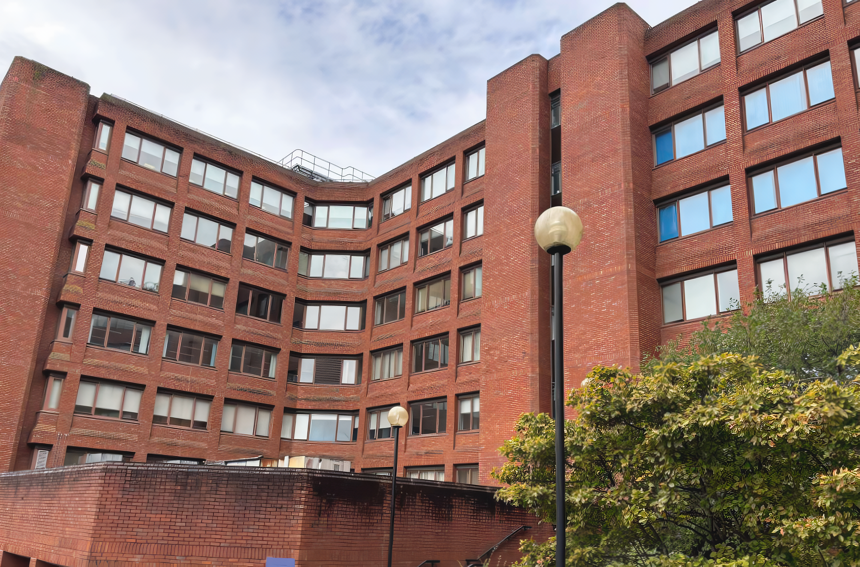Edinburgh has slid 15 places down the retail centre rankings in recent years, primarily owing to investment in retail outside the city centre and, arguably, the transport policies of the city council.
In 10 years’ time, including schemes that have opened in the past two years, Glasgow’s retail provision will have grown by more than 2m sq ft – the bulk of it outside the city centre. Should Scotland’s second city be worried about its retail standing and potential saturation? Could it, in fact, go the same way as Edinburgh?
Research by analyst CACI shows that, even with some of the planned investment in Glasgow city centre going ahead over the next 10 years, some £240m of retail spend could be lost to shops outside the city centre.
Suburban development
The pipeline of future suburban development includes 1m sq ft at Pollok and 1m sq ft, albeit of retail and leisure, at Ravenscraig. Retail proposals as part of the regeneration at Glasgow Harbour could see a further 500,000 sq ft.
“You can’t magic retail spend fromnowhere. You can just sprinkle it on a new scheme and hope that it grows,” says Ken Gunn, director at CACI.
He is not the only one who has concerns. One agent, who wished not to be named, points out that some stores in the city centre have lost as much as 15% of their trade since Glasgow Fort, Scotland’s biggest retail park, opened last year.
Silverburn in Pollok will be the firstmajor retail scheme to complete. Derek Gordon, director of Eric Young & Co, says: “Glasgow doesn’t need Silverburn. There are no retailers crying out for it. If there was a Harvey Nichols or Selfridges requirement, then I could understand it. It is the second time this has happened. The first was the Fort, and there were retailers who said they wouldn’t go there – for example, H&M. The same doubts will cross their minds about Silverburn.”
Indeed, at the British Council of Shopping Centres’ annual conference in Belfast earlier this month, Bob De Barr, director of Land Securities, warned that falling retail demand could leave new space empty.
“Glasgow is not going to be like Edinburgh because its centre is easy to get to,” says Stephen Gunn, partner at CWHB. “There is going to be an effect of some sort, though.”
Peter Todd, managing director and head of leasing at Mills Corporation, which owns the St Enoch Centre in the city centre and is jointly developing Ravenscraig, agrees. “There does seem to be a huge appetite to provide urban shopping centres,” he says, “but they all tend to provide a pretty similar merchandise mix and are cannibalising each other. Silverburn will hurt centres like East Kilbride and Braehead. If Grosvenor do something [with The Forge, at Parkhead in the east of the city], and then there is the Fort, they will all affect each other rather than the city centre.”
The fact that so many developers are willing to invest in Glasgow and its surrounds must mean that there is more than a bit of blind faith in the city’s retailing future.
LandSec has bought into the city-centre’s Buchanan Galleries with Henderson Global Investors. Its head of retail development, Peter Cleary, believes the centre has “significant latent potential”. Likewise, Todd’s Mills Corp bought the St Enoch Centre for its “potential for improvement and refurbishment”.
Retail Property Holdings, which is behind Silverburn, but also has development plans for a city-centre site (see panel), has done its own research, which shows retail spend increasing over the next three years. Bill Potts, project manager (city plan) at Glasgow city council, also points out that its five-year structure plan looks at growth rates of 3% but that in 2004 it was actually 8%.
Clear message
“West Scotland is outperforming the rest of Scotland,” he says. “Around £1.5bn would be required to support the city centre in 2011. We estimate £1.7bn of retail spend, and that means Ravenscraig and Pollok both coming on stream.”
Regardless of which figures you believe, the clear message is that no one can rest on their laurels and assume success, new or continued.
With Silverburn, Richard Low, managing director of RPH, admits there will be some overlap with the city-centre’s offer, but he is hoping to attract aspirational retailers and some new names to Glasgow. Mills Corp is aiming for a strong leisure element and new retail concepts at Ravenscraig, although it has missed the opportunity to build an indoor snow slope as the concept has been bagged by Capital Shopping Centres at Braehead.
The city centre needs to build on its strength, say commentators in the market. Cleary adds: “The next phase of activity should have a city-centre focus. Our research suggests that shoppers like the diversity: retail and leisure, tourists and workers. It’s a unique city-centre experience and, if you take thatas the object of demand, the focus is logical.”
John Menzies, partner at Donaldsons, says: “The key is that the better brands won’t leave the city centre. We are not going to see the likes of Hugo Boss and Karen Millen going out of town.”
Gordon agrees. He says: “The city centre is so strong that out-of-town retail is not going to have a marked effect – but it is up to retailers, as they are very aware of cannibalisation.”
The council seems to be putting its focus back on the city centre and John Bury, the city’s planning manager, says it is trying to encourage investment, such as an extension to Buchanan Galleries.
Some might argue that a more restrictive planning policy on retail outside the centre would be a more effective strategy but, for now, let’s hope that this jewel of the UK’s retail market can rise to the challenge.
|
Buchanan Street (city centre) The final block, to be redeveloped in what is Glasgow’s prime shopping street, is 90% owned by Retail Property Holdings, but it is in a legal dispute with Bass over CPOs. Described as “the only bit of nastiness left” on Buchanan Street, RPH plans 70,000 sq ft over six shops and additional commercial and residential space. Richard Low of RPH says it is hoping to get vacant possession in 12-15 months’ time, with a two-year build time. Buchanan Galleries (city centre) The 600,000 sq ft centre opened in 1999, anchored by John Lewis. Land Securities took a 50% stake in the centre in its industrial-for-retail asset swap with Slough Estates last year. Together with fellow stakeholder Henderson, it has plans to extend the centre by 250,000 sq ft, partially over Queen Street station, in the next five years or so. “This would allow the provision of big units and significant parking provision,” says Peter Cleary, head of retail developmentat LandSec. Silverburn in Pollok (suburban) Developer Retail Property Holdings is building a 1m sq ft retail scheme to replace the 250,000 sq ft 1970s centre. Debenhams, Marks & Spencer and Tesco are all taking space, and RPH hopes to attract a combination of regular high street brands and upper-middle aspirational names, particularly those new to Scotland. “We are looking at who’s coming to Scotland and the UK. There are a lot more out there,” says Richard Low, managing director of RPH. St Enoch’s Centre (city centre) Mills Corporation, which bought the16-year-old centre from Deka in January,has medium-term plans to extend it by asmuch as 300,000 sq ft, with a planning application due to be submitted early in the New Year. Parts of an extension could involve land outside Mills Corp’s control. The type of retailer it is hoping to attract would not be a fundamental shift from what is already there, says Peter Todd, managing director and head of leasing at Mills. Glasgow Fort/Shandwick Square (suburban) The successful Glasgow Fort retail park opened last year and has been the subject of market rumours about expanding ever since. This month, the park’s owner, Hercules Property, bought neighbouring Shandwick Square, a covered shopping centre. Shandwick’s original owner, Frogmore, had plans to double the centre’s size to 250,000 sq ft. Hercules is drawing up a masterplan for the area but it is not known at this stage whether that will include any new retail. Braehead (out of town) Built as part of a wider regeneration project, the 818,000 sq ft centre opened in 1999. A retail park followed a year later, and work is under way on boosting the leisure elements of the site with a £40m X‑Scape leisure scheme, which includes an indoor ski slope. Ravenscraig (outside Glasgow) A 1m sq ft retail and leisure development will form part of a mixed-use regeneration project on the site of the 1,125-acre former steel works. Mills Corporation, in a joint venture with Wilson Bowden, has planning permission but the scheme is on hold until certain issues have been resolved. Land Securities, which owns a shopping centre in nearby East Kilbride, has challenged the structure plan which gives Ravenscraig town-centre status. The case is to be heard in the House of Lords next year. Peter Todd of Mills Corp, which is renowned for its retail/leisure schemes, such as Xanadu, Madrid in Spain (pictured), says it is considering experimental retail concepts as well as more mainstream and a high leisure content at Ravenscraig. “We are not looking to start anything until at least 2007,” he says. Trongate (city centre) Selfridges owns the freehold to this 6.5 acre site, and original plans were for a 200,000 sq ft store to be open by 2007. But last year, the store announced that it was re-evaluating its expansion plans and dropping out of schemes, such as the Broadmead extension in Bristol. But the likelihood of its Glasgow store going ahead is still hotly debated. So far, nothing seems to have moved on at the site, but John Bury, city planning manager at Glasgow city council, insists: “We are still talking to Selfridges, and it is still on the cards.” The Forge, Parkhead (suburban) Grosvenor, which bought the 520,000 sq ft centre last year, says it has no plans for it as yet. Market commentators, however, believe a developer of Grosvenor’s reputation is unlikely to sit on such as asset for any lenght of time. |










